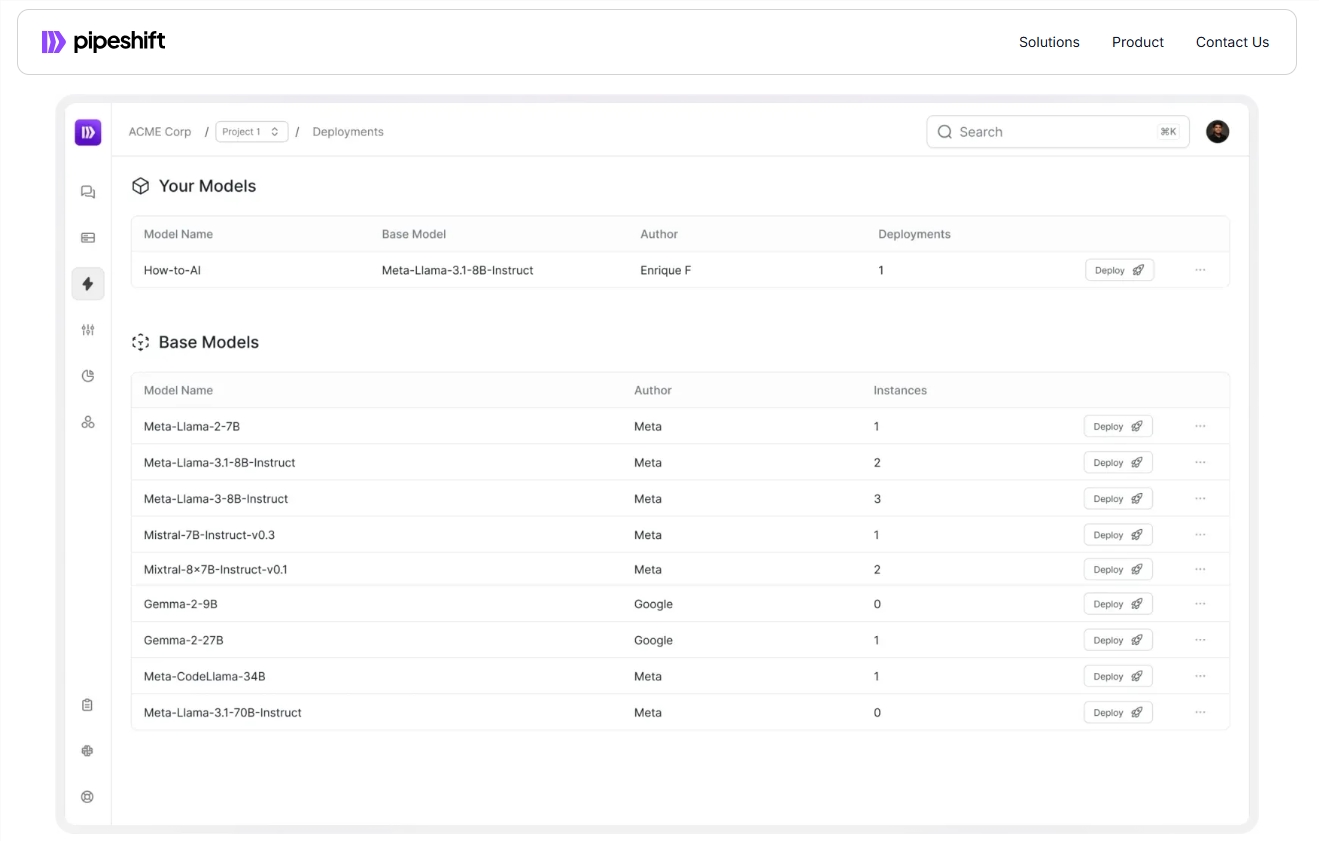Startup Pipeshift has launched a new end-to-end platform designed to help enterprises train, deploy and scale open source generative AI models more efficiently. The platform is compatible with a variety of cloud environments and on-premises GPUs, significantly improving inference speed and reducing costs, solving the problem of efficient switching between multiple models by enterprises. It adopts a modular inference engine MAGIC framework, which allows for flexible combination of different inference components to optimize inference performance without tedious engineering work. This is undoubtedly a great benefit for enterprises facing challenges in deploying and managing AI models.
Recently, startup Pipeshift launched a new end-to-end platform designed to help enterprises train, deploy and scale open source generative AI models more efficiently. The platform not only runs on any cloud environment or on-premises GPU, but also significantly improves inference speed and reduces costs.

With the rapid development of AI technology, many companies are facing the challenge of how to switch between multiple models efficiently. Traditionally, teams need to build a complex MLOps system that involves multiple links such as acquisition of computing resources, model training, fine-tuning, and production-level deployment. This not only takes a lot of time and engineering resources, but may also lead to infrastructure management. Costs are increasing.
Arko Chattopadhyay, co-founder and CEO of Pipeshift, noted that developing a flexible, modular reasoning engine often takes years of experience, and Pipeshift’s solutions are designed to Simplify this process with its modular reasoning engine. The platform adopts a framework called MAGIC (GPU Inference Cluster Modular Architecture), which allows teams to flexibly combine different inference components according to specific workload requirements, thereby optimizing inference performance without the need for cumbersome engineering.
For example, a Fortune 500 retail company, after using the Pipeshift platform, integrates four models that originally required four independent GPU instances to run onto a single GPU instance. In this way, the company not only achieved a five-fold increase in reasoning speed, but also reduced infrastructure costs by 60%. This achievement enables companies to remain competitive in a rapidly growing market.
Pipeshift has reached annual licensing agreements with 30 companies and plans to launch tools to help teams build and scale data sets in the future. This will further accelerate the experimental and data preparation process and improve customer productivity.
Official entrance: https://pipeshift.com/
Points:
Pipeshift’s modular inference engine can significantly reduce GPU usage of AI inference and reduce costs by up to 60%.
Through the MAGIC framework, enterprises can quickly combine inference components, improve inference speed and reduce engineering burden.
Pipeshift has partnered with several companies and will launch more tools in the future to help companies manage AI workloads more efficiently.
With its efficient, flexible and cost-effective characteristics, the Pipeshift platform provides enterprises with an effective solution to simplify the deployment and management of AI models, which is worth paying attention to. Its future development and the launch of new tools are also worth looking forward to.